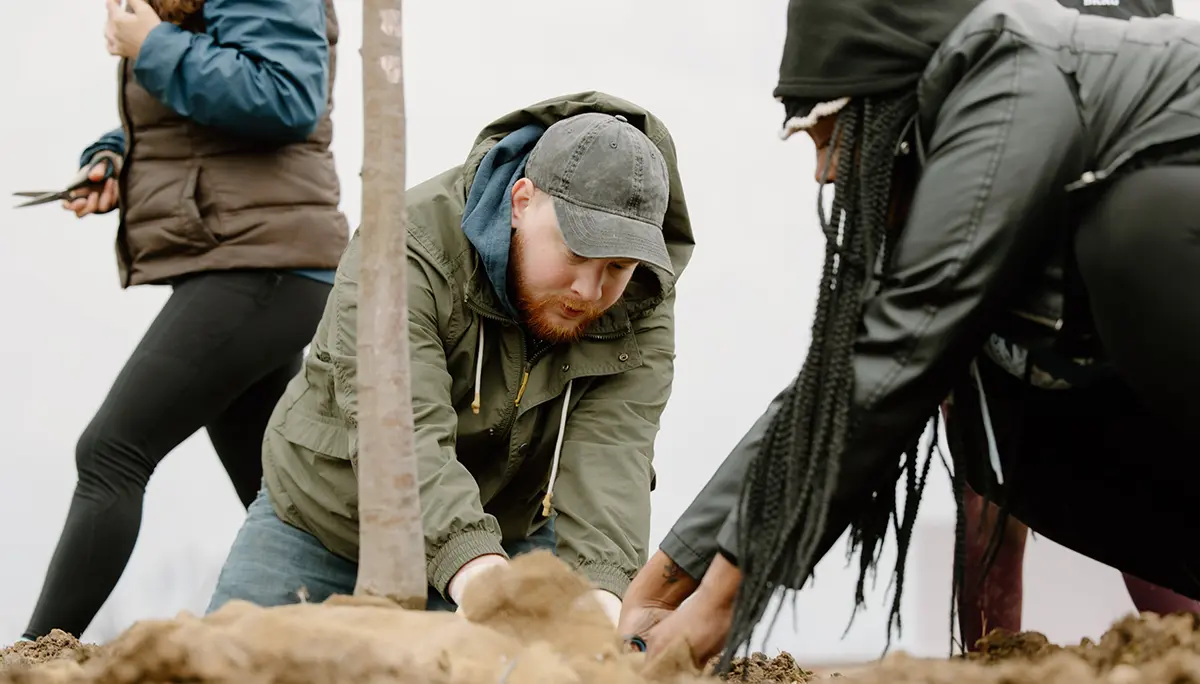Cool Franklin County Schools
Organization: Green Columbus
Mission: Green Columbus is a sustainability-focused nonprofit striving to activate volunteer engagement, grow equitable tree canopy coverage, and foster resilient communities.
Location: Columbus, Ohio
Communities benefiting directly from the project: Hilltop, Franklinton, South Side
Country: United States
Other Organizations Involved: Columbus City School District
 @ Green Columbus
@ Green Columbus
Background
Columbus, Ohio, is home to the fastest-growing urban heat island in the United States. With just 22% tree canopy citywide, our downtown hotspots and low-canopy communities are burning. As a result of redlining, our low-income communities do not have equitable access to a robust tree canopy. In an effort to support the Columbus Urban Forestry Master Plan, Green Columbus is stepping up to plant trees on large private property parcels, specifically schools. By planting large, native tree canopies around playgrounds, near parking lots, shading bus stops, and more, we can help keep schoolgrounds cool and usable for generations to come. These trees will also contribute to lower rates of asthma and decreased utility bills.
Goals
Our main goal is to create a culture which cares about trees and environmental equity in Central Ohio, while simultaneously increasing our tree canopy by planting over 200 large canopy trees at Columbus City Schools locations.
Main activities
To engage students and explain the complexity of tree equity, we will create a pre-project survey and post-project survey, conduct scheduled classroom visits to schools, collaborate with local teachers to identify gaps, meet with education organizations for existing material, and create interactive activities.
When it is time to plant, we will select species according to USDA climate predictions, contract with a local planting team, purchase support supplies, and work with Columbus City Schools to complete plantings.
Once trees are planted, we will purchase maintenance supplies, draft a contract with arborist, create a monitoring schedule based on planting dates, and ensure trees survive transplantation.
Expected outcomes
A main result of this project will be that students can relate the many benefits of native trees to their community and the overall mitigation of extreme heat. They will also have the chance to participate in replicable classroom activities that will engage students in urban forestry across Ohio. With 245 trees, we hope to have 10 fully-planted school campuses by the end of the project. Through a monitoring and maintenance plan overseen by a community arborist, we aim to ensure that trees survive transplanting to establish their new roots.